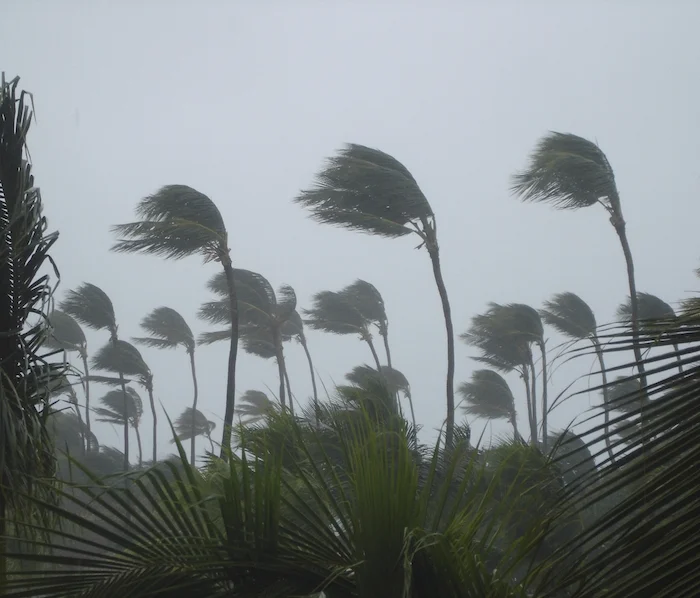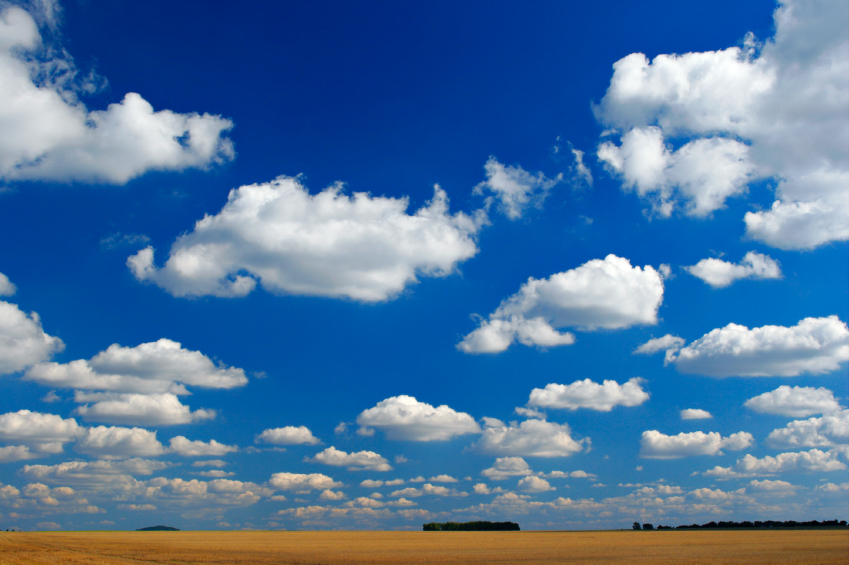Weather is all around us.
It's what our environment feels like.
Weather can be sunny and warm, hot, cold, or wet and windy.
There can be clear skies or clouds and storms with thunder and lightning.
There can be rain, hail and snow.
Weather controls what we wear, what we can do, what we eat.
We can't control the weather.
Meteorologists study the weather
Instruments on a weather station help meteorologists forecast the weather. iStock
Each day scientists who study weather (they are called meteorologists) tell us what the weather will be like in the place that we live. This is a weather forecast.
In their weather forecast they tell us:
what the temperature will be (hot or cold)
if it will be wet (rain) or dry.
if there will be clouds or a clear sky.
if it will be windy or still.
These symbols can be used to tell us what the weather will be like:
Can you tell what each one means?
Watch a video about all kinds of weather
Clouds
You can see clouds floating in the air above the surface of the Earth. Clouds are made of tiny droplets of water or frozen ice crystals.
How are clouds formed?
Air contains moisture in the form of a gas which is called water vapour. As water vapour cools it changes from a gas into a liquid. Clouds form when water vapour in the air cools and changes into droplets of water. The tiny water droplets gather together to make a cloud. When the droplets fall, it is rain.
Types of Clouds
The three main kinds of clouds are cirrus, stratus, and cumulus.
Cirrus clouds ©Getty
Cirrus clouds are white and feathery, and form high up in the sky. They are wispy and thin.
Stratus clouds ©Getty
Stratus clouds are like flat grey sheets layered across the sky. They are the lowest clouds in the sky, and the drops of water vapour in them are very small.
The rain that falls from stratus clouds is drizzle, or snow in very cold areas.
Cumulus clouds. iStock
Cumulus clouds are thick and fluffy, and change shape rapidly.
They can be white, or dark when they are full of water droplets and very cold.
All other clouds are combinations of these three.
There are ten types of clouds that are found at different levels of the atmosphere.
Cumulonimbus clouds bring rain. iStock
Rain clouds have 'nimbo' or 'nimbus' as part of their name. For example, cumulonimbus are fluffy clouds that bring rain and thunderstorms. They have large drops of rain, and as the temperature gets colder, the drops of rain join together and the cloud becomes dark. They bring lightning, thunder or hail.
The highest of all the clouds are the group of clouds with 'cirrus' as part of their name. They are feathery and white and are made up of frozen water droplets.
Adding 'alto' to the name of a cloud tells that it is a cloud high in the sky.
Hail
A large hailstone.
Hail is frozen water.
Hail is pieces of ice falling from the sky. Hailstones form in very cold cumulonimbus rain clouds. Most hailstones melt before they reach the ground. Hailstorms are usually short and violent. Sometimes hailstones can be very big, but usually they are very small.
Snow
Snow is frozen water.
A photograph of snow crystals. ©iStock
Snow is made up of tiny, six-sided ice crystals, which form on dust particles inside very cold clouds. The crystals grow in size and join together. They become heavy and drop down through the clouds.
There are many different crystal shapes, but they are always six-sided or have six branches coming out of a central core.
©Getty
Snow is useful.
Snow is useful because when it melts, the water fills rivers and dams. If it melts slowly, snow doesn't usually cause flooding. But, if it melts quickly snow can cause floods and if rain falls on the melting snow it can make the floods even worse.
Snow is also fun
People ski on it and play in it.
Fun in the snow! ©Getty
Snow can be dangerous
A blizzard can paralyse a town or city ©Getty
It can be dangerous for animals when it is very heavy, and difficult for animals to walk through. It covers the food they eat and freezes the water they drink.
It becomes dangerous for traffic when it piles up on the roads.
Snow storms are also called blizzards. A bad blizzard can bring towns and cities to a standstill for days. Water pipes freeze and burst, overhead wires get weighed down with snow and break, snow piles up around houses. People are unable to get out to buy food, nor can shops deliver food. Cars won't start and it is too dangerous to drive.
An avalanche is a large mass of snow that slips down a mountain. People have been killed by avalanches.
Dew
Dew hangs from a spider's web ©Getty.
All air contains moisture, which is called water vapour. The moisture in the air close to the ground comes from the soil and the plants. When the air cools during the night, the moisture is cooled and water droplets form on the grass and plants. This is dew.
We see the dew early in the morning on grass and hanging from spiders' webs.
There is more dew on days when the sky is clear.
When it is cloudy, the trees and plants don't get as cold and there is less moisture to form dew. Dew is dried by the sun's warmth.
Frost
Frost can damage plants because it freezes them. ©Getty
Liquid becomes solid when the temperature reaches freezing point, or 0ºC (32ºF). When the temperature falls below freezing point, the moisture in the air freezes into ice crystals and they settle on grass and plants. This is frost.
Frost soon melts and the moisture is dried by the sun.
Frost damages plants because the water inside the cells of a plant freezes and breaks the cells' walls. The frozen parts of the plant will die.















